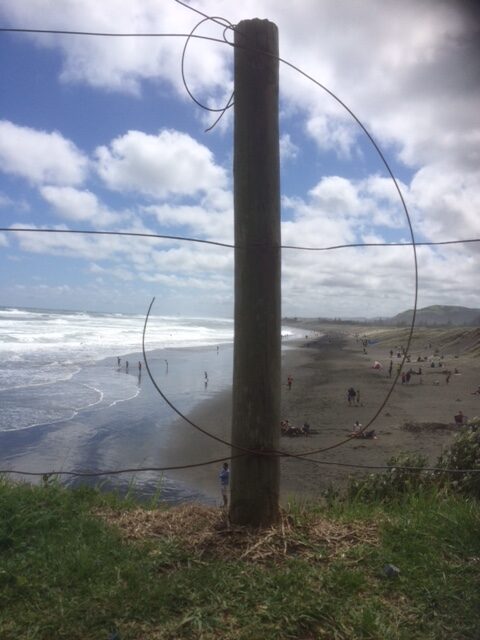Jhan a-Maki

Here is a photo that shows the very entrance to Muriwai Beach, one of the jewels of the Auckland province. Well over a million visitors a year walk past this point.
The rusted and broken wire fence typifies the council’s attitude – cheap and nasty, ill-considered, poorly maintained and dangerous.
Unfortunately, this is by no means the only failing piece of infrastructure at Muriwai, and certainly, there are other examples that are far more dangerous to the point of being life-threatening.
One of my neighbours in our small community of 1,000 is a regional park, which has many benefits, as well as more than a few not so positive aspects.
As with most neighbours, a relationship of sorts develops.
In this case, the community relationship with the regional park has resulted in a more involved understanding of council machinations, priorities and expenditure than most ratepayers will experience.
Having witnessed so many illogical decisions and such wasted large expenditures, along with patently poor design and planning, it is not hard to consider that other facets of the council are also juggernauts steaming off into the distance with little apparent control.
On a trip with my adult sons travelling down the New South Wales coast visiting small coastal villages similar to our own, it became patently obvious that the planning, design and construction of the civic amenities in those towns were far superior to our own.
On my return from that trip, this difference in planning and quality was discussed with others in our small community, who were a little dubious as to how marked the difference was. However, one mature professional couple were embarking on a similar trip and made the decision to carefully observe the amenities. They were also surprised at the differences, which of course raised the question: why?
Do the underlying psychology and systemic operation of a current civic council bear a direct relationship to the period in which they were established?
In the NSW case, the systemic operation is of Georgian influence, and in New Zealand’s case, Victorian. Many consider Georgian influences on town planning provided more cohesion than previous, with an increased emphasis on civic amenities such as town halls, theatres, concert halls and parks. A thorough approach, more measured, and arguably with better quality construction and manufacture, than the chaos the approaching industrial revolution was going to invoke.
Victorian influences on town planning were considered to be dominated by wholesale advances in communication, transport and industry. Mass production along with the pitfalls of cheap labour created a completely different civic environment and style of civic administration.
The ‘Georgian’ NSW civic administrations appear more measured and thorough, with a more quality product. The ‘Victorian’ Auckland example is far less so.
Due to the government’s push for a re-structure of local government, this bears some relevance. Will this restructure change the systemic operation of the councils here in New Zealand?
The government may restructure a failed system, but it is doubtful they will really change the underlying psychology of the council bureaucracy. The same staff will be there on Monday doing the same job under a different title and badge – there will be the same burgeoning middle management all waiting for their turn to become consultants.
One thing is for sure: given the findings of the review so far, there will be a considerable increase in Maori input.
Regardless of any racial issue, this will inevitability provide another layer of bureaucracy for us to fund and navigate.
The government may find alternative ways to spread the funding and increase the influence of whoever they may fancy, but for most of us, the reality is that apart from the cost, the councils will not change. Their systemic operation will remain in Victorian times.
